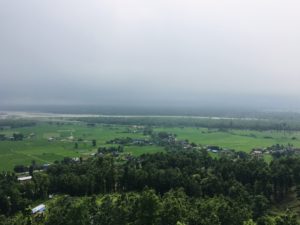ZSL has been conserving Nepal’s tigers in partnership with Department of National Parks and Wildlife Conservation (DNPWC) and local conservation partners for over 25 years. It is currently working across all tiger-bearing Protected Areas (PAs) on a range of projects including population monitoring, habitat restoration, antipoaching, conflict mitigation and community engagement.
With funding from WildCats ZSL has supported the DNPWC’s investment in Parsa National Park (PNP), helping it extend its area by an additional 129 km2 in 2015 and building predator-proof corrals and conducting an occupancy survey for tigers outside the extension area of the PNP in 2019.
This project builds on this previous work by carrying out robust biological and habitat monitoring to inform conservation management of the landscape to the east of PNP, to work with local communities to generate support for tiger conservation and together design strategies to mitigate human-tiger conflict.
The interim report recently received highlights the impact that COVID-19 is having on some conservation activities. As a project which relies heavily on the participation of the local community, a new timetable of activities has been established in collaboration with the Community Forest Users Groups (CFUG) and local Mithila Wildlife Trust (MWT).
Project activities and key achievements so far:
- A new work plan was devised due to delays caused by the COVID-19 lockdown.
- The Rapid wildlife and habitat assessment have been designed but postponed due to COVID-19, now to start with the training of field surveyors in October 2020 and the surveys to take place in November and December.
- Social surveys to identify vulnerable communities and map Human-Wildlife conflict zones have been designed and the questionnaires prepared. The data will now be collected in October and November.
- A planning meeting was held to organise three community workshops addressing the needs of tiger conservation and its importance to a healthy ecosystem. These workshops will now be held in September and October.
- 500 information leaflets have been designed and printed ready for distribution at the events and in targeted communities.
- Three information boards have been designed and finalised for installation in the month of September along the edge of vulnerable tiger habitat.
- The local school programme to develop tiger conservation champion clubs will be delayed until schools reopen.
Read the full report here




